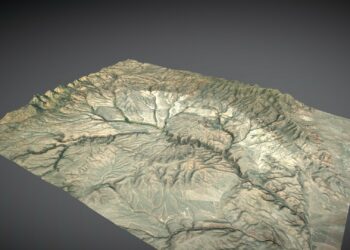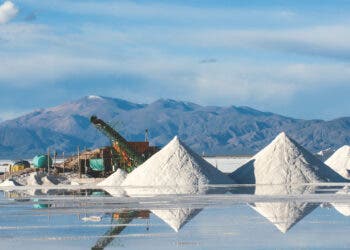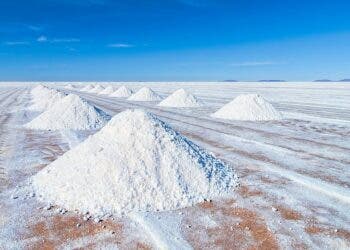Salt flats are very important for our economy. Also called salars, these geological structures are large and flat areas that were once lake beds and are now covered with salt and other minerals.
They form when the water evaporates, leaving the minerals behind, and are particularly important as areas from which lithium is extracted. Lithium is used in the batteries for EVs and renewables and is increasingly in demand.
But the problem is that we don’t really understand salt flats all that well. Now, a new study sheds new light on salt flats and offers clues to how they form and evolve, and how we can prevent ecological damage from mining.

A team at the University of Massachusetts Amherst and the University of Alaska Anchorage were the first ones to characterize two types of surface water in the salt flats.
This is a big step towards better knowing how water moves through the salar basins and will be key to reducing the environmental impact on these habitats, the researchers said.
“Surface water is important for desert ecosystems, but the future of surface water remains uncertain because of climate change and human consumption. Understanding how surface water responds to precipitation and interacts with groundwater is useful for better predicting future water availability,” the researchers wrote in their paper.
Better understanding salt flats
Salt flats are covered with salt and other minerals and they often look white because of this. They form in deserts and other arid places where large bodies of water dried up and the minerals are left behind.
They can be found all around the world. The largest one is called Salar de Uyuni and is located in Bolivia.
We can think of a salt flat as a big depression into which water is constantly flowing through surface runoff and through subsurface water, the researchers said.
In this depression, there’s no outlet for the water, and because it’s located in an arid region, the rate of evaporation is so significant that what would have been lake beds became salt flats became over millennia.
The closer it is to the surface, the less saline the water is in the salt flat. Down near the bottom, the water is very salty. However, the salt flats are sometimes pocketed with pools of brackish water.
Many kinds of valuable metals can be found within salt flats, while the pools of brackish water are critical habitats for flamingos and vicuñas.
Studying salt flats has been challenging for researchers as they are relatively inaccessible and their hydrogeology is very complex. As the pressure to mine lithium becomes greater, it’s also more and more important to understand them, especially if we want to protect the ecosystems around them and prevent mining damage from wreaking havoc on the area.
However, “you can’t protect the salt flats if you don’t first understand how they work,” Sarah McKnight, lead author of the research, said in a statement. With this in mind, she and her team combined observations of surface and groundwater satellite data and computer modeling to see something that has so far been invisible to researchers.
It turns out that not all water in the salt flat is the same. There are “terminal pools,” brackish ponds of water on the parts of the salt flat where water is briny but hasn’t reached full concentration. There are also “transitional pools,” located at the boundary between briny waters and the salt flat. Water comes into these pools from different sources.
It’s important to define these two different types of surface waters because they behave very differently,” Mcknight said. “After a major storm event, the terminal pools flood quickly, and then quickly recede back to their pre-flood levels. But the transitional pools take a very long time, from a few months to almost a year.”
The study has implications for how salt flat ecosystems are managed, the researchers said. The transitional and terminal pools should be treated differently, which means paying more attention to where water comes from and how long it takes to get there, they said. This could help to better protect salt flats from the impact of the mining sector.
The study was published in the journal Water Resources Research.






